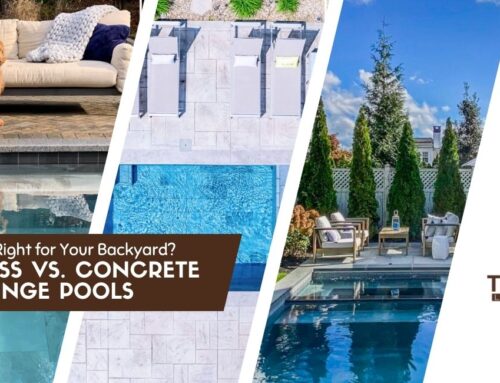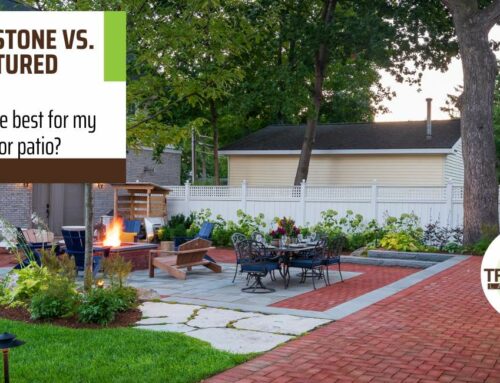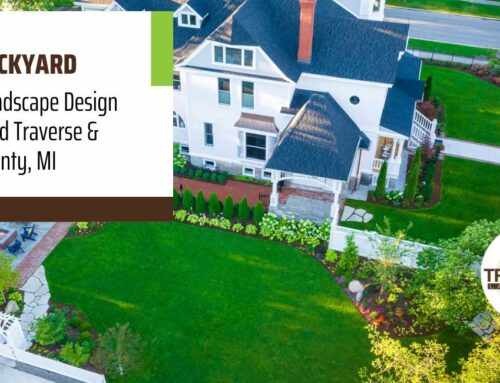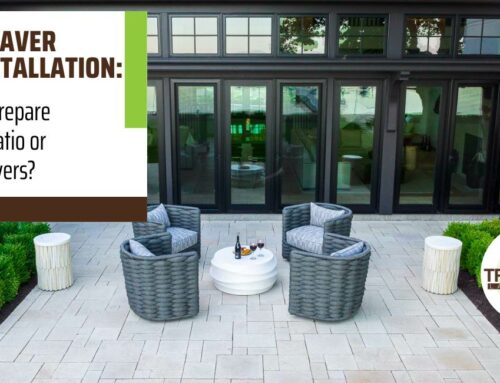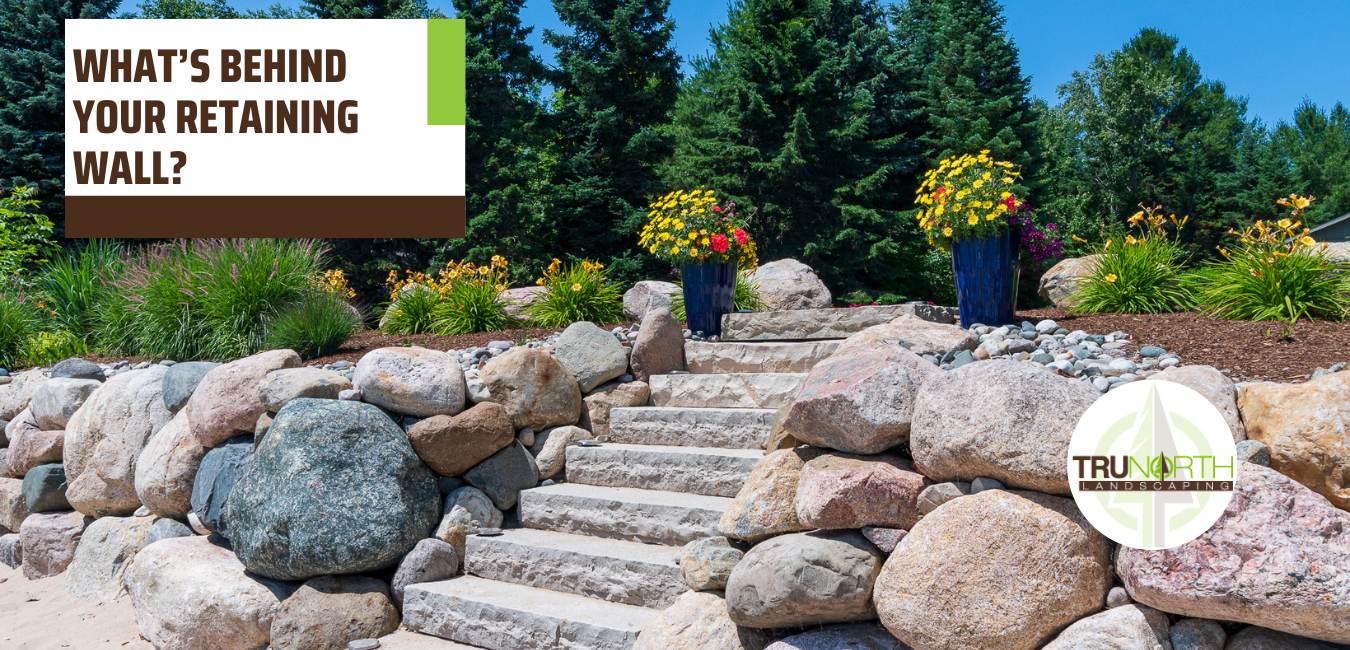
Did you know that retaining walls serve a purpose more than just looking pretty on your property? Retaining walls serve a vital purpose in landscape design. The primary function of a retaining wall is to resist the lateral pressure of soil in areas with steep slopes. This structural element not only adds visual appeal to your landscape but also helps manage erosion, create level planting spaces, and define outdoor living areas. Retaining walls can be constructed from various materials, such as natural stone, brick, concrete blocks, wood timbers, and even metal, each providing a unique aesthetic and functional appeal.
However, while the material visible on the outside is what catches the eye, the true success of a retaining wall lies beneath the surface. The unseen elements—like the gravel base, porous drainage backfill, and drainage systems—are critical components that ensure the wall’s structural integrity. Neglecting these hidden essentials can turn a visually stunning wall into a structural liability
The Engineering Behind a Retaining Wall
Though different materials can be used to build a retaining wall, the same fundamental engineering principles apply to every well-built wall. The visible material that forms the face of the wall provides the aesthetic appeal, but the real work is done by what’s behind it. The base layer of gravel supports the weight of the wall, while porous gravel backfill and drainage pipes, or drain tiles, ensure that water is channeled away from the wall rather than building up behind it.
Without proper drainage, water can accumulate behind the wall, creating hydrostatic pressure that pushes the wall outward. Over time, this pressure can cause the wall to fail. This is why the drainage system and gravel backfill are crucial; they prevent water from becoming trapped and help maintain the wall’s stability. Regardless of the style or material you choose, these components are the foundation of a long-lasting retaining wall system.

A Real-Life Example: The Consequences of Cutting Corners
During a client consultation, I was called to evaluate a retaining wall that had been installed a couple of years earlier but was now showing signs of failure. The wall was located in the client’s backyard and served to create a more usable lawn space that sloped toward a nearby lake. The design consisted of two pre-cast concrete retaining walls forming a terraced planting bed between the lawn and the lake.
Upon closer inspection, it was clear that the wall was leaning noticeably forward toward the water, indicating a structural issue. As I continued to assess the wall, it became evident that the contractor who installed it had made some critical errors. Most notably, they had failed to account for water drainage along the slope. Instead of installing a proper drainage system, they had backfilled the wall entirely with topsoil—a material that holds water rather than allowing it to drain freely. In effect, the wall was functioning like a dam, trapping water behind it. The accumulating water increased the pressure on the wall, which ultimately led to its failure.
When Nature Takes Over
We advised the client to reach out to the original contractor to rectify the issue at no cost, but unfortunately, Mother Nature had other plans. Torrential rains over the next week saturated the topsoil behind the wall, and the added pressure caused the structure to collapse completely.
In my experience in the green industry, one lesson stands above all: never gamble with water. Water is an incredibly powerful force, and cutting corners by omitting essential components like drain stone or filter fabric is a recipe for disaster. If the retaining wall had been constructed with a proper drainage system, the failure could have been avoided. Unfortunately, the contractor’s oversight ended up costing both time and money, not to mention the frustration for the homeowner.
The Importance of Professional Installation
A professionally built retaining wall can be a stunning and functional addition to your landscape, providing both aesthetic appeal and structural support. However, if the installation is done without a thorough understanding of engineering principles, your investment could quickly crumble—both literally and figuratively. Retaining walls must be built to last, and that means paying attention to the elements you can’t see, not just the ones you can.
In Traverse City, Michigan, where soil composition, moisture levels, and slope variations are a common challenge, it’s even more critical to ensure your retaining wall is built correctly. Each site is unique, and the right design, materials, and installation techniques can make the difference between a wall that stands for decades and one that fails in just a few years.

Why You Should Work with Experts
At TruNorth Landscaping, we specialize in designing and building retaining walls that last. Our team understands the unique challenges that Northern Michigan’s landscapes present, from fluctuating moisture levels to challenging topography. Whether you’re planning a simple garden wall or a complex, multi-tiered retaining system, we ensure every project is designed with both beauty and longevity in mind.
The hidden components—gravel base, backfill drainage, and structural support—are as important to us as the visual elements. We take the time to carefully assess your site, consider all potential drainage issues, and recommend the best materials to ensure that your investment stands the test of time.

Is There a Retaining Wall in Your Future?
Whether you’re considering a retaining wall to create more usable outdoor space, enhance your landscape, or prevent soil erosion, remember that what’s behind the wall is just as important as what’s in front of it. Proper drainage, the right base materials, and expert installation are the keys to ensuring your retaining wall doesn’t just look good today but continues to perform well for years to come.
If you’re thinking about adding a retaining wall—or any other landscape feature—give us a call. Our professional design and build team in Traverse City is here to help turn your vision into reality.
So, whether you’re planning a patio, a garden, or a full landscape renovation, always remember: the beauty you see is only half the story. The real strength lies in the parts you don’t see.
Ready to get started building your retention wall? Begin by filling out our consultation form.
Image Source: all images property of TruNorth Landscaping
Get started today with a consultation!
Want tips and tricks for your lawn & landscaping?
Sign Up For Our Free Quarterly Newsletter
We take your personal information very seriously. We will not share any of the information you provide with any 3rd parties. Provided information will be used specifically to contact you in regards to your inquiry.

